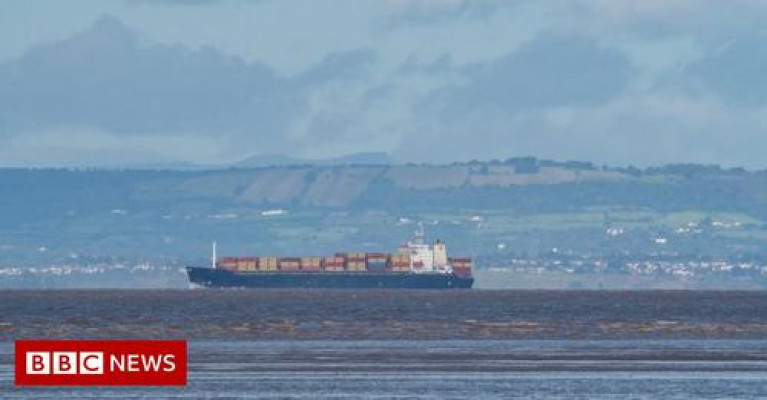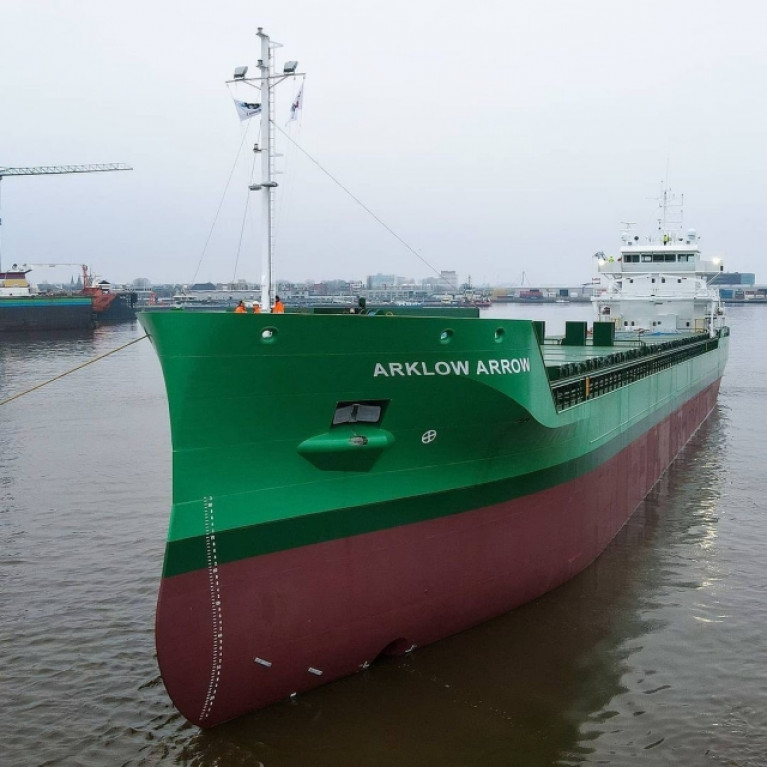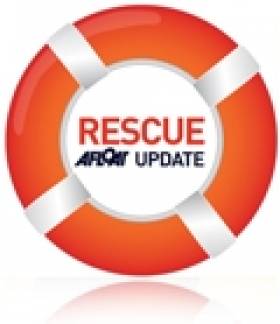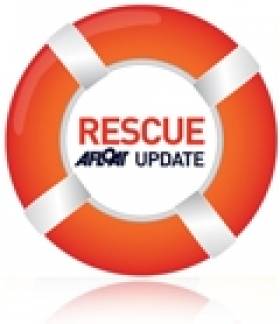Displaying items by tag: Bristol Channel
A hydro-powered ferry service could start running between south Wales and the south-west of England.
The trip writes BBC News, would venture across the Bristol Channel to link Swansea with Cornwall and Devon, is being discussed by councils in the counties.
The idea is said to be at a very early stage, however, and details remain sparse.
There is also no indication whether the crossing could also be used for goods and freight.
But if it is given the go-ahead, Swansea's council leader said it would be a "massive boost for tourism and business".
Rob Stewart said he was keen on the idea as it could "cut your travel time to Devon and Cornwall by half".
"It would have environmental benefits too: taking cars off the road and introducing green-powered ferries," he added.
The Local Democracy Reporting Service reported that just over a week ago, Labour's Mr Stewart said the council was looking at which locations in Cornwall or Devon could be used for the service.
Further reading here of the proposed service.
Arklow Newbuild On Sea Trials While Another Fleetmate Dry Docks After Short Hop from Avonmouth
Arklow Shipping, operators of a fleet of dry-cargo short-sea traders and deep-sea ocean going bulkers, is where Afloat catches up with a sample of their ships in waters much closer to home, writes Jehan Ashmore.
Before this one cannot ignore their latest ship, Arklow Arrow albeit yet to enter service, yesterday undertook shipbuilders trials in the inshore waters of the Wadden Sea near the Dutch-German border.
Arklow Arrow of 8,543dwt, forms the fifth in a series of six 'A' class bulk oriented cargoships so far built by Ferus Smit's Dutch shipyard that was launched late last year. It was from the yard's inland location in Westerbroek where the 120m newbuild, the first to take this name, was towed along the canal system to Delfzijl.
After an initial period spent at the port, Arklow Arrow made a short passage to Eemhaven from where the newbuild carried out the trials in waters that lead further out into the North Sea.
The newbuild 'A' class belongs to the shipyard's 8,400dwt (circa) design series where cargo is contained in 2 box-shaped holds within a double hull and use of pontoon hatch covers.
A crew of 9 are accommodated in airconditioned cabins and equipped with private sanitairy units. Arrow's design is based from a slightly modified version of the B' class 8,600dwt bulkers also completed by Ferus Smit.
Dublin Port
Among this B class is Arklow Bay, which arrived in Dublin Port yesterday and remains berthed at Deepwater Quay otherwise known as the 'Coal' Quay.
The ship arrived from Gijon, northern Spain on a link that down the decades has seen the cargo of scrap metal carried out.
Prior to arrival, the ship unusually took anchorage up offshore off Killiney Bay.
Swansea (Dry Docks)
Afloat also tracked Arklow Rainbow today, having been in Swansea Dry Docks for some time. SDD have benefitted from ASL's custom since the closure of Dublin Dry Docks in recent years.
The R class short sea traders are among the oldest tonnage of 7 remaining R ships and that of the overall fleet. The class dating from 2002 had been an original 16-strong series that provided the backbone of work in European waters before new tonnage led to disposal.
The fleet in general transport cargoes among them bulk grain trades, dangerous bulk cargoes, steel rails, minerals and project cargoes.
Avonmouth, Bristol Channel
It was during a previous Afloat tracking in November that another B-class (previous version) Arklow Brook had too previously occupied SDD and likewise of the R class made the short passage from Avonmouth.
Also then the F class Arklow Flair had berthed in Avonmouth Docks (the Port of Bristol along with Portbury), as this is where Arklow Rainbow is now next expected to call.
Arklow's to Marco Polo (Cruiseship)
Also tracked on that same occasion, it was noted the laid-up classic cruiseship, Marco Polo the veteran dating from the 1965 was built as a liner during the Soviet era eventually becoming the first ship for UK non-fly operator, Cruise & Maritime Voyages. CMV however collapsed last year due to Covid's dramatic impact on the global cruise industry.
Afloat had tracked the 880 passenger Marco Polo in Avonmouth Docks on the day before a departure on 19 November, (following an auction sale) and again while in the Meditteranean Sea. This was to facilitate a delivery voyage for new owners with a next port of call bound for Dubai.
Circumstances have since changed last month given the career in the Middle East (albeit planned as a hotel ship) have turned dramatically as the ship instead proceeded further east to India but for scrapping at Alang.
This final episode marks the demise of the classic cruiseship, having provided direct cruises out of Belfast Harbour and also calls to Irish ports regularly since 2010, the year CMV founded.
Another development Afloat will also follow up in greater detail has come to attention this week involving the 'adults' only CMV cruiseship Magellan as Ships Monthly also reported.
The1985 built ship Afloat adds also served in domestic waters with Irish cruisegoers directly departing Irish ports is too heading for the shipbreakers.
Magellan along with Marco Polo were the only CMV cruiseships of their fleet that served the Irish marketplace directly. The operator though also had an extensive cruise programme in Europe and operations beyond among them Marco Polo which had made cruises in Canadian waters.
Seven Kayakers Rescued After Bristol Channel Ordeal
#Rescue - Just days after a kayaker was rescued from the Bristol Channel comes footage of another rescue on the opposite side of that same body of water – this time of seven people kayaking off the Exmoor coast.
According to the Western Morning News, Minehead RNLI's Atlantic lifeboat launched on Sunday (3 May) to the kayakers who got into difficulty off the Foreland Point lighthouse but were able to reach the safety of the shore.
One of the kayakers had suffered an injured ankle, and all were transferred by lifeboats from Minehead and Ilfracombe to nearby Lynnmouth Harbour for treatment.
Kayaker Rescued From Bristol Channel
#Rescue - A man was rescued from the water in the Bristol Channel off the Vale of Glamorgan this afternoon (Friday 1 May) after his kayak capsized and sank.
Milford Haven Coastguard Operations Centre received multiple emergency calls at 12:26pm from concerned members of the public who could see two kayakers, one of whom was in the water.
The remaining kayaker was attempting to tow the man in the water back to shore but appeared to be having difficulties.
Milford Haven Coastguard sent the Porthcawl RNLI lifeboat and the Porthcawl Coastguard Search and Rescue Team to the scene.
While the lifeboat was on its way, further reports came in telling the coastguard that the man was on longer being towed to shore but was holding onto an oar and drifting eastwards into the Bristol Channel. Onlookers had lost sight of him.
The coastguard tasked the second Porthcawl RNLI lifeboat, Barry Dock RNLI Lifeboat, RAF Chivenor search and rescue helicopter R619 and the Llantwit Major Coastguard Search and Rescue Team.
Meanwhile, the coastguard received a new 999 call from a member of the public who could see the man adrift, and were able to direct one of the Porthcawl lifeboats to the man’s location.
The man was conscious but very cold, and was winched from the lifeboat by the helicopter and taken to Morriston Hospital in Swansea.
“We were very relieved that the lifeboat was able to find the man in the water," said Johnathan Lewis of Milford Haven Coastguard.
"If you are going kayaking, always wear a buoyancy aid. Take at least a couple of means of calling for help with you. A VHF radio is ideal, backed up by mini marine flares and a mobile phone sealed inside a plastic bag."
Restructured Fastnet Line Reduce Year Round Service to Seasonal Schedule
The discontinued winter sailing schedule for this year is also expected not to be repeated during October 2012-March 2013. Fastnet Line's decision to make the Celtic Sea route into a shoulder season and summer only service follows a similar path taken by Stena Line which withdrew Dun Laoghaire-Holyhead (HSS) sailings in mid-September, for report click here. The central corridor route is due to reopen sometime in April or May 2012.
Cork City and County council and Kerry County council have provided €700,000 to support Fastnet Line and yesterday they announced an additional €150,000 in co-funding for the period of the examinership. In order to stabilise finances the ferry company are to radically reduce passenger capacity of the Julia (see photo) from 1,500 down to 950. This is in line with the capacities of the Julia serving 'night' sailings.
She has a crew predominately from Eastern Europe and Irish and UK deck officers. The Bermuda flagged, Hamilton registered vessel is currently berthed at Ringaskiddy Ferry Terminal, Cork Harbour. At 154m she is the largest ferry to date capable of berthing in the limited confines of the swing basin in Swansea and with a draft of 5.8m in a port which is subject to a large tidal range on the Bristol Channel.
Operating costs on the 10 hour service has been severely hampered by continuing increases to world oil prices. From the year 2010 to this year, fuel costs rose by 27% and almost 50% from the original budget of 2009. The company claims that each crossing amounts to €18,560 alone in fuel costs.
Fastnet Line to date has carried 150,000 customers, of which 75% have originated from the UK market, generating on average €350 per person (€40m approx) exclusive of fare and on-board spend. This crucial market is core to the success of the company's direct 'gateway' route to scenic south-west Ireland, with Swansea connected to the M4 motorway linking midland population centres and London. The operator claims a saving of 600km driving based on a round trip compared to using rival ferries running on routes to Rosslare from Pembroke Dock and Fishguard.
Since the reinstatement of the service in March 2010, after Swansea Cork Ferries pulled the Superferry (photo) off-service in 2006, the loss to tourism generated revenue on both sides of the Celtic Sea was estimated to be £25m per annum according to the Welsh Assembly and a similar figure recorded in the Cork and Kerry region.
The company also outlines the reduction in carbon emissions saved from operating the only direct service specifically connecting the regions of Glamorgan and Munster. Some 500,000 freight miles alone were saved in the Welsh region since the service started instead of using alternative route running from Pembrokeshire ports.
- Cork Harbour
- west cork
- port of Cork
- Celtic sea
- Cork City council
- Fastnet Line
- M.V. Julia
- M4 motorway
- Kerry
- Irish High Court
- Stena Line
- Ports and Shipping News
- cork harbour news
- Ferry news
- HSS
- Welsh Assembly
- Cork County Council
- Associated British Ports
- ABP
- Ringaskiddy Ferry Terminal
- M.V. Superferry
- SwanseaCork Ferries
- SCF
- Fastnet Line Group
- Kerry County Council
- HSS Dun LaoghaireHolyhead sailings
- Glamorgan
- Munster regions
- Bristol Channel
- Bristol Channel tidal range
- Swansea Port
- Irish tourism sector
- Pembroke DockRosslare
- FishguardRosslare

































































